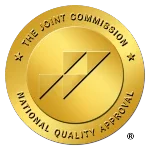Getting Effective Help for Self-Injury Behaviors
Self-harm is an incredibly difficult and complex issue to navigate. It is often a sign of deeper psychological issues, such as depression, self-esteem issues, or a lack of self-control. If you are self-harming, it is time to get help. Therapy can provide the support needed to work through your self-harming behaviors and develop healthier coping mechanisms.
In this blog post, we’ll explore effective treatment for self harming. We’ll cover what self-harm is, why it happens, and how therapy fits into a self-harm treatment plan.
If you are stuck in a cycle of self-harm, keep reading to find out more about the effective programs at Catalina Behavioral Health that can help with stopping.
Call Our Self Harm Rehab Helpline
What Is Self-Harm?
Self-harm is any self-injuring behavior that causes physical pain or damage. It can take many forms, including self-mutilation, burning, cutting, hitting oneself, substance abuse, and pulling out hair. Self-harming behaviors are usually done in secret and can become compulsive habits for some people.
Why Do People Self-Harm?

Self-harm is a complex issue, and there is no single cause that leads to self-harming behavior. Often, self-harm can be seen as an external way of expressing intense internal emotions. People who self-harm may feel overwhelmed by their feelings and turn to self-injury as a way to cope.
Another reason why people self-harm is that they experience a sense of relief afterward. Self-harming behaviors can provide a release from distress and tension, although this feeling is often short-lived.
How Can Therapy Help Self Harm and Other Mental Health Conditions?
Therapy can be an effective self-harm treatment for those who are self-harming. A therapist can work with you to explore the underlying causes of self-harm and other mental health problems and develop healthier ways of managing your emotions.
Through therapy, you can learn about yourself, including what triggers self-injuring behavior and why it brings temporary relief. A therapist can also help identify better-coping strategies that don’t involve self-harm. These could include self-soothing techniques, such as deep breathing, journaling, and relaxation exercises.
Another crucial part of self-harm treatment is building a support system. A therapist can help you identify the people in your life who can be supportive during self-harming urges or provide distraction activities when needed.
Treating Self-Injury with Cognitive Behavioral Therapy
Cognitive behavioral therapy (CBT) is a form of psychotherapy that can be used to help treat self-harm. CBT focuses on changing the way you think and behave in order to reduce self-destructive behaviors. Remember that self-harm is a serious issue and should not be taken lightly. With CBT, you can learn to better manage difficult emotions and self-destructive behaviors.
CBT is based on the idea that our thoughts, feelings, and behaviors are all connected. This means that if we can change the way we think about something, then this will influence how we feel and act. With CBT, the therapist will work with you to identify self-defeating thoughts and behaviors that might be contributing to self-harming behaviors. They will then help you come up with strategies for replacing these negative thoughts with more balanced self-talk.
CBT can also help you develop new coping skills. This can include problem-solving skills, self-soothing techniques, and relaxation techniques. The goal is to find healthier ways to deal with difficult emotions and self-harming behaviors. You will also learn how to be mindful of your triggers for self-harm so that you can avoid engaging in self-destructive behaviors.
Treating Self-Injury with Dialectical Behavior Therapy
Dialectical behavior therapy (DBT) is another form of psychotherapy that can be used to treat self-harm. DBT combines cognitive behavioral techniques with mindfulness practices to help individuals better manage difficult emotions and self-destructive behaviors. With DBT, you can learn to better regulate your emotions, reduce self-destructive behaviors, and build healthier relationships with yourself and others.
The main goal of DBT is to help individuals become more aware of their thoughts, feelings, and behavior so that they can identify self-destructive patterns and find healthier ways to cope. DBT combines cognitive behavioral techniques with mindfulness practices to help individuals become more self-aware and self-accepting. The therapist will work with you to identify self-defeating thoughts and behaviors that might be contributing to self-harming behaviors.
DBT also teaches skills such as interpersonal effectiveness, distress tolerance, and emotion regulation. These skills can help you learn how to self-soothe when feeling overwhelmed or build healthy relationships with yourself and others. You will also learn how to be mindful of your triggers for self-harm so that you can avoid engaging in self-destructive behaviors and develop good mental health.
Understanding the Link Between Borderline Personality Disorder and Self Harm

If you or someone you love struggles with poor mental health and self-harm, it’s important to understand why self-injury occurs — especially when it happens in conjunction with Borderline Personality Disorder (BPD). Know that self-harm isn’t a sign of weakness or an attempt to manipulate others — it typically indicates a person is struggling with some type of underlying mental health condition.
Our informal BPD assessment tool can help you or your loved one better look at this diagnosis and if it may be impacting self-harm behaviors.
When self-harm often occurs in combination with Borderline Personality Disorder, it’s usually a result of intense emotions that become overwhelming and difficult to cope with. While self-injury doesn’t directly cause or lead to BPD, self-harm may be one way someone with BPD attempts to cope with their difficult emotions, such as anger, fear, self-loathing, and uncertainty.
Creating self-harm injuries is often an unhealthy means of self-soothing and self-nurturing. It can also be used to control emotional states or relieve tension from uncomfortable thoughts and feelings. People who self-harm may find it to be a way of regaining control over their emotions, which can be especially helpful for those struggling with BPD.
Self-harm may also be a form of self-punishment or self-hatred. It’s common for someone with BPD who self-injures to have feelings of guilt and shame — and self-harm can become an unhealthy way to express these feelings.
Know that self-injury isn’t the only way people with BPD can cope with their emotional pain. With the right therapy and support, it is possible for self-harm behavior to be replaced with healthier methods of self-expression and self-care. Learning self-acceptance, self-compassion, mindfulness, and other healthy coping skills can help someone struggling with self-harm to better manage their emotions in a more constructive manner.
Confidential Mental Health Assessment
Self-Harm and Self Injury: How to Cope in a Healthy Way
If you are self-harming or self-injuring, it can be difficult to find healthy ways to cope with the emotions that drive your actions. But self-harm does not have to be the only way for you to cope.
Dealing With Negative Emotions
Learning how to deal with difficult and negative emotions in more constructive ways can help you move away from self-harming behavior. This is a process, and it will take time. Just sitting with negative feelings can feel very uncomfortable at first, but it will become easier.
Understand Your Triggers
One of the most important steps in learning how to cope without self-harming is understanding your triggers—the people, places, or things that set off self-destructive behaviors. You might find it helpful to write down what triggers self-harm. Once you know your triggers, you can work on avoiding them and instead find more constructive ways of dealing with the emotions that come up when those triggers are present.
Find Healthy Coping Strategies

In place of self-harming behaviors, there are many alternative ways to cope. Some self-care activities that can be helpful include:
- Talking to a trusted friend or family member about your feelings
- Doing a physical activity like going for a walk, running, swimming, or biking
- Writing in a journal
- Practicing deep breathing exercises
- Creating art or music
- Reading self-help books
- Seeking the help of a mental health professional. Try family therapy if your therapist believes it may help
- Develop self-esteem
Focus on Self-Compassion
Some people self-harm as a way of punishing themselves—but it’s important to remember that self-compassion is the key to recovery. It’s okay to be kind to yourself, even if you make mistakes. You deserve self-care and self-love as much as anyone else does.
By recognizing your triggers and engaging in self-compassionate activities, you can start to manage difficult emotions in a healthier way that doesn’t involve self-harm or self-injury. Taking care of yourself and working on self-acceptance can lead to long-term healing from self-destructive behaviors. With self-help strategies and the support of those around you, it is possible to find healthier ways to cope with difficult emotions.
Reaching Out for Help
Self-injury is not something that should be ignored. It’s not a sign of weakness or a cry for attention — it’s an indication that something is wrong, and you need help. People who self-harm may eventually try attempting suicide.
Treatment centers such as ours that offer a self harm rehab program can provide the support, guidance, and resources needed to help recover from self-injury and make positive changes in your life.
What are the Benefits of Self Harm Treatment Centers?

Treatment centers are designed to provide a safe, secure environment for self-injury recovery. They have experienced mental health professionals who understand self-harm and other mental disorders and can help you identify the reasons why self-harming behaviors are occurring and develop strategies for avoiding them.
Treatment centers also provide an opportunity to learn self-care skills and coping strategies that can help you manage difficult emotions. You’ll have access to a variety of therapeutic programs such as cognitive behavioral therapy, dialectical behavior therapy, art therapy, and more. All of these therapies will be tailored to meet your specific needs.
Finally, treatment centers provide a supportive community of peers and professionals who can offer encouragement and guidance. This type of support system is essential for getting yourself lasting recovery and connections in a healthy and positive community.
Immediate Placement for Mental Health Treatment
Effective Programs of Treatment for Self Harming
When considering self-harming treatment centers, it’s important to look for one that fits your specific mental health needs. Consider factors such as location, cost, insurance coverage, and the type of treatment offered. It’s also important to make sure that the center has experienced self-injury specialists who understand the unique challenges associated with self-harm.
At Catalina Behavioral Health, we offer clinicians with decades of experience and programs of recovery based on trauma-informed principles for positive outcomes. Our record of success brings new clients from across the country, and we’d be honored to help you or your loved one find ways past this destructive behavior.
Do you self-harm or know someone who self-harms? All calls are strictly confidential, so please feel confident in reaching out now and getting options for recovery!





